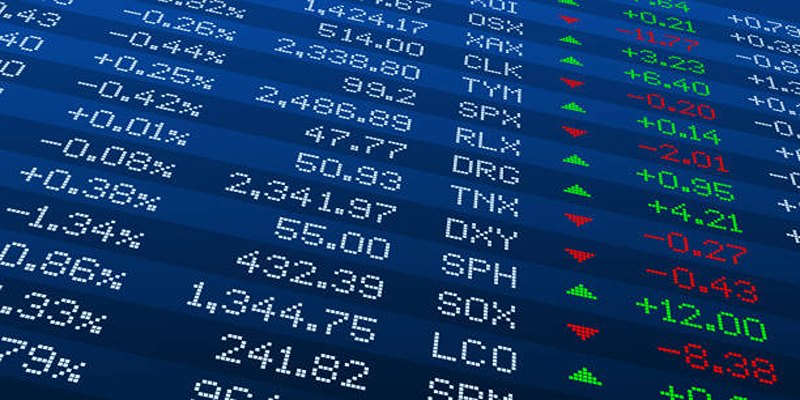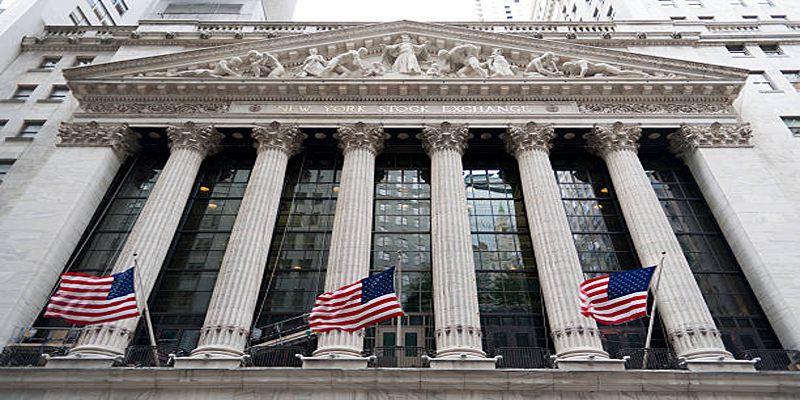How the New York Stock Exchange (NYSE) Works: An Insider’s View
Oct 03, 2024 By Vicky Louisa
The New York Stock Exchange (NYSE) is one of the most iconic financial marketplaces in the world, playing a pivotal role in the global economy. Founded in 1792, it has grown to become a leading platform for buying and selling securities, hosting thousands of companies and millions of trades daily. The NYSE operates under a unique auction-based system where designated market makers facilitate trading to ensure fair pricing and liquidity. This system is complemented by advanced electronic trading technologies, enabling efficient and transparent transactions. Investors, companies, and traders around the world keep a close eye on the NYSE due to its influence on market trends and investment decisions. Understanding how the NYSE functions provides valuable insights into the mechanisms of capital markets and economic growth.
The Structure of NYSE

The structure of the New York Stock Exchange (NYSE) is meticulously designed to ensure seamless trading and maintain market integrity. At its core, the NYSE is divided into three primary segments: the trading floor, the electronic trading systems, and the regulatory framework.
- Trading Floor: The trading floor is the iconic image of the NYSE, with traders in colorful jackets shouting and gesturing orders. However, this physical presence has diminished over the years, as technology has taken over a majority of trading activities. The remaining open-outcry system serves as a backup in case of electronic failures and for specialized trades.
- Electronic Trading Systems: The NYSE operates an advanced electronic trading platform called the Designated Market Maker (DMM) system. It connects buyers and sellers through a computerized order matching system to facilitate efficient transactions.
- Regulatory Framework: As a leading financial institution, the NYSE adheres to strict regulatory standards set by federal agencies such as the Securities and Exchange Commission (SEC) and self-regulatory organizations like the Financial Industry Regulatory Authority (FINRA). These regulations aim to maintain market integrity, protect investors, and promote fair competition.
The Role of Market Makers
The NYSE follows a unique auction-based system where designated market makers play a crucial role. They are responsible for maintaining orderly markets by providing liquidity, facilitating trades, and managing price discrepancies. Each stock listed on the NYSE has a dedicated DMM who oversees its trading activities. These market makers use their expertise to adjust prices based on supply and demand and execute orders at the best possible price for buyers and sellers.
In recent years, technology has played an increasingly significant role in trading activities, reducing the need for human market makers. However, their expertise and knowledge of market trends continue to be valuable assets in maintaining fair and efficient markets.
The NYSE Trading Process
The NYSE opens at 9:30 am ET and closes at 4 pm ET from Monday to Friday, with a pre-opening session beginning at 6:30 am ET. The trading process on the NYSE involves several steps:
- Pre-Opening Session: During this phase, designated market makers assess market conditions and determine an appropriate opening price for each listed stock based on orders placed before the opening bell.
- Opening Auction: At precisely 9:30 am ET, the opening auction begins, where DMMs match buy and sell orders to determine the opening price for each security.
- Continuous Trading: Once the market is open, buyers and sellers can place orders continuously throughout the day, with DMMs facilitating trades and maintaining efficient markets.
- Closing Auction: At 4 pm ET, a similar process to the opening auction occurs to determine the closing price for each stock.
- Post-Market Session: After regular trading hours end at 4 pm ET, traders can still execute orders through an electronic post-market session until 8 pm ET.
The NYSE also operates on a T+2 settlement cycle, meaning that transactions are settled two business days after the trade date.
Technology and Modernization
The integration of technology and modernization has fundamentally transformed the operations of the New York Stock Exchange (NYSE). Over the last few decades, substantial investments in cutting-edge technology have enhanced trading efficiency, transparency, and accessibility, revolutionizing how trades are executed and monitored. One significant advancement is the shift from the traditional open-outcry trading floor to powerful electronic trading platforms. These platforms leverage high-speed algorithms and sophisticated matching engines to process thousands of trades per second, minimizing latency and maximizing execution speed.
Moreover, the NYSE has embraced innovations such as real-time data analytics, which provide traders with immediate insights into market conditions and trends. These technological advancements help market participants make more informed decisions and react swiftly to market changes. Cybersecurity also plays a crucial role, with robust measures in place to protect against threats and ensure the integrity of trading data.
The exploration of artificial intelligence (AI) and machine learning (ML) promise to further enhance the NYSE's capabilities. AI and ML applications can offer predictive analytics, automate compliance, and improve risk management. These technologies are poised to drive the future evolution of the NYSE, maintaining its status as a leader in the global financial markets.
The Impact of NYSE on the Global Economy

The NYSE is a powerful economic force, with its listed companies representing a significant portion of the global economy. It provides a platform for companies to raise capital and attract investors, creating job opportunities and driving innovation. In addition, the NYSE's performance is closely monitored by economists and analysts as an indicator of market trends and overall economic health.
Moreover, the NYSE's influence goes beyond just stocks; it also trades other financial instruments such as options, bonds, and exchange-traded funds (ETFs). These activities contribute to the liquidity and stability of financial markets worldwide.
Conclusion
The New York Stock Exchange (NYSE) is a cornerstone of the global financial system, providing a reliable and efficient marketplace for buyers and sellers to trade securities. With its robust regulatory framework, unique auction-based trading process, and continuous technological advancements, the NYSE remains at the forefront of modernizing the world's financial markets. Its impact on the global economy cannot be overstated, making it an essential institution in today's interconnected business landscape. As we continue to witness rapid shifts in technology and market trends, one thing remains certain: The NYSE will continue to adapt and evolve while maintaining its position as a leading stock exchange. So whether you are an individual investor or a large institution, the NYSE offers a trusted platform to participate in the ever-changing and exciting world of financial markets.

Triston Martin May 21, 2024
Unraveling the Mysteries of Social Security: 6 Facts You Probably Didn't Know
3050

Susan Kelly May 13, 2024
Navigating the Financial Landscape: Understanding Nasdaq, Dow Jones, and Beyond
96246

Triston Martin Feb 22, 2024
The Best Websites for Investors Looking to Participate in Peer-to-Peer lending
30818

Susan Kelly Feb 27, 2024
Buying A Car With Outstanding Finance: What Happens?
5856

Susan Kelly May 21, 2024
9 States Where Residents Escape Income Tax Burdens
80862

Triston Martin Nov 13, 2023
A Complete Guide About Dividend Yield on a Stock
21022

Triston Martin May 13, 2024
Navigating Investment Choices: Robo Advisors vs. Financial Advisors
90354

Triston Martin Dec 31, 2023
Discuss Comprehensively: How to Coupon?
98061